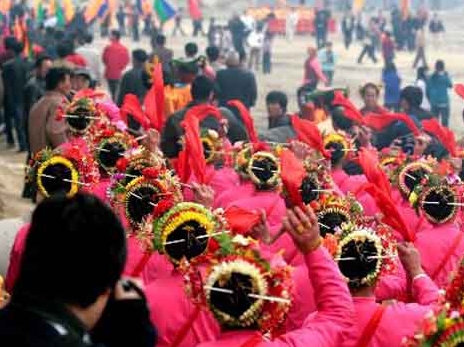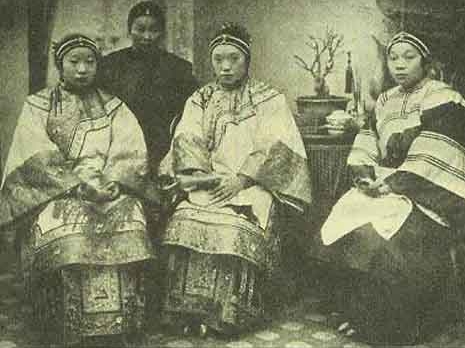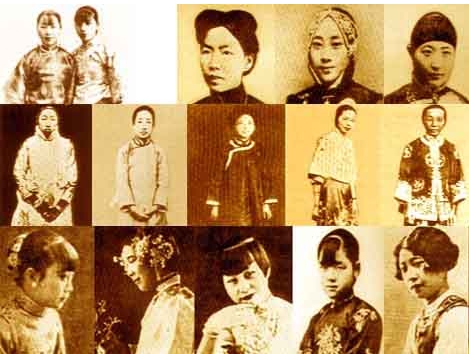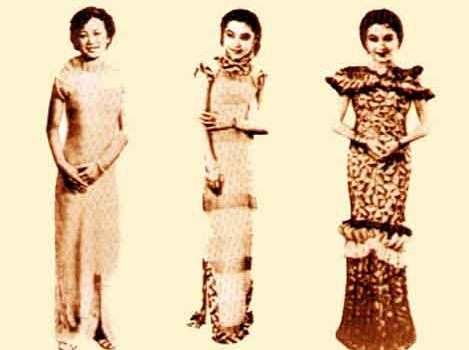
From the end of the Guangxu Period till the beginning of Republic of China (1908 – 1912),the popular bun types of Chinese women included luoji(spiral bun), baoji(pack bun), lianhuanji(interlinking bun), chaotianji(skyward bun), yuanbaoji(yuanbao-shaped bun; yuanbao is a shoe-shaped gold or silver ingot), baoyuji (abalone-shaped bun), xiangguaji (muskmelon-shaped bun), kongxinji (hollow bun), panbianji (bun formed by rounding the tail), mianbaoji (bread-shaped bun), yiziji (line-shaped bun), dongyangji (Oriental bun), zhuimaji (bun like a person falling off a horse), wufengji (dancing-phoenix bun), hudieji(butterfly bun) and so on.

In the case of a young woman, in addition to the bun, there was also a lock of hair covering the forehead, commonly called "qian liuhai" (front bang).The fashion of the qian liuhai varies slightly, too: the line-shaped, the hanging-silk-shaped, the swallowtail-shaped, and so on.

Around the 12th year of Republic of China (1924 A.D.), jianfa(a hairstyle formed by cutting the hair neatly) became popular. In the 1930's, perm was spread to China. After 1933, Chinese women in big cities usually followed the Western style, and some even dyed their hair into different colors such as red, yellow, brown, etc., regarding that as fashionable.






